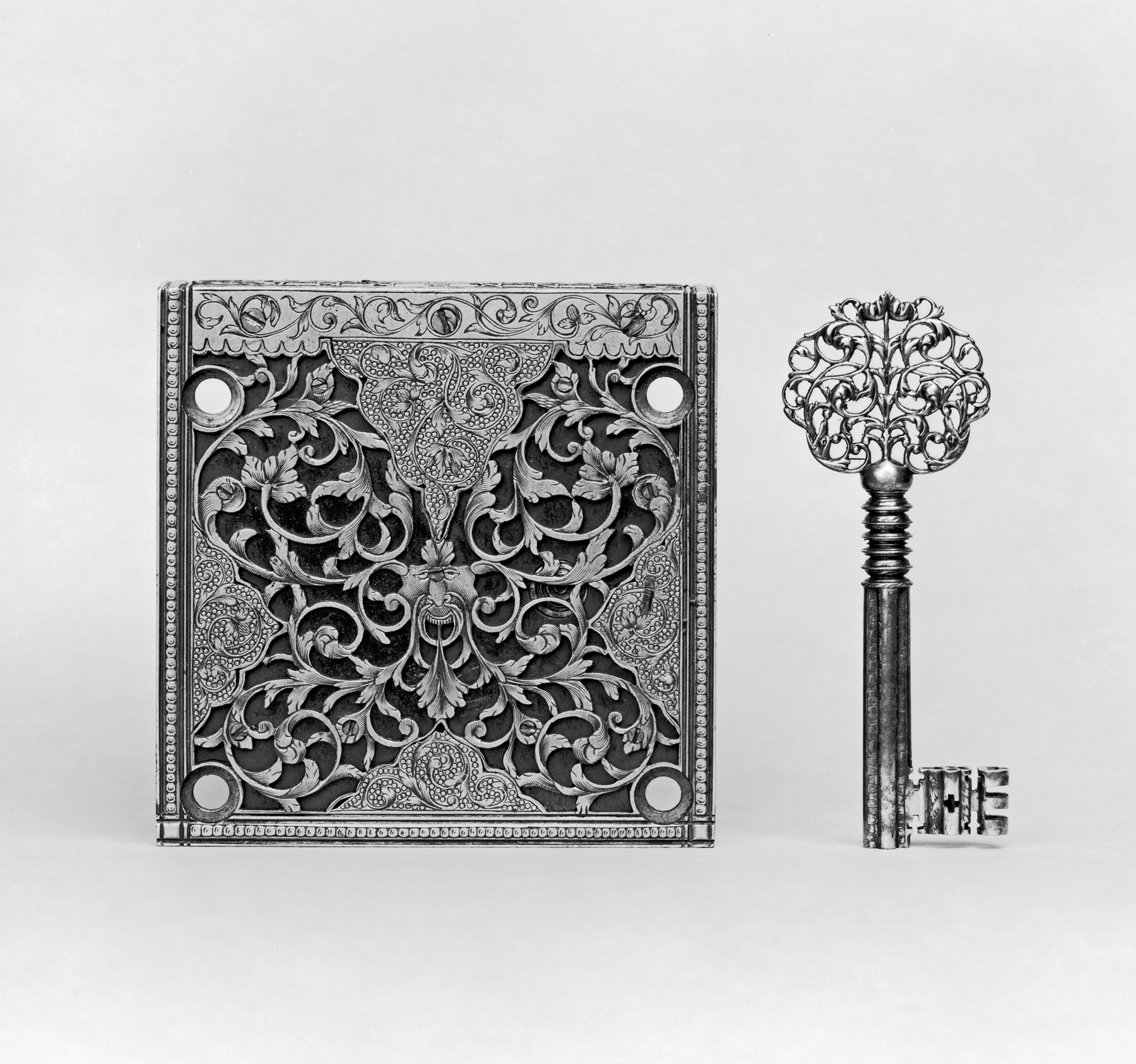Mortise Lock with Key
(Baroque Europe )
A mortise lock fits into a cavity (mortise) carved out of the door or cabinet it is meant to secure. Most door and cabinet locks in the 1600s were mortised, but exterior padlocks were also widely used. The same delicate vine design is found on both the lock and key.
Provenance
Provenance (from the French provenir, 'to come from/forth') is the chronology of the ownership, custody, or location of a historical object. Learn more about provenance at the Walters.
James Gurney, until 1898 [date and mode of acquisition unknown]; James Gurney Sale, Christie's, March 8, 1898, lot 225; George R. Harding, London, 1898, by purchase; Henry Walters, Baltimore, June 30, 1899, by purchase; Walters Art Museum, 1931, by bequest.
Exhibitions
| 1987 | Safe and Secure: Keys and Locks. Cooper-Hewitt National Design Museum, New York. |
| 1971-1972 | World of Wonder. The Walters Art Gallery, Baltimore. |
Geographies
United Kingdom, England (Place of Origin)
Measurements
lock: 3 1/2 x 3 1/2 in. (8.89 x 8.89 cm);
key: 3 1/2 in. (8.89 cm) (l.)
Credit Line
Acquired by Henry Walters, 1899
Location in Museum
Not on view
Accession Number
In libraries, galleries, museums, and archives, an accession number is a unique identifier assigned to each object in the collection.
In libraries, galleries, museums, and archives, an accession number is a unique identifier assigned to each object in the collection.
52.173




